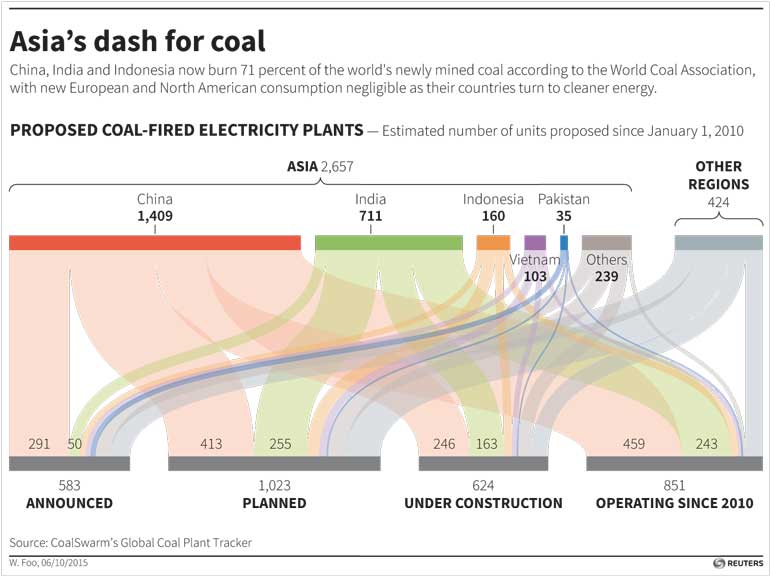Friday Mar 21, 2025
Friday Mar 21, 2025
Wednesday, 14 October 2015 00:00 - - {{hitsCtrl.values.hits}}

Reuters: If and when a global deal to curb climate change is done in Paris this December, the matter of enforcement is likely to be left not to sanctions but to peer pressure.
While legally enforceable environmental treaties do exist, experts say that some of the most effective environmental controls have come about from a shared sense of self-interest.
In 1941, an international tribunal established the principle that “the polluter pays” by ordering compensation after fumes from the Trail Smelter, processing lead and zinc in western Canada, damaged farmland across the border in the United States.
But the concept has been hard to apply to greenhouse gases swirling around the global atmosphere. So far, plaintiffs have been unable clearly to pin the harm they suffer – from floods, droughts or rising seas - on another nation’s emissions.
Only recently has the science become good enough “that a farmer in Peru can say ‘My land is at risk from this glacial dam that is about to break because of climate change’,” said Carroll Muffett, President of the Center for International Environmental Law in Washington.
Advances in the scientific understanding of global warming meant that “that sort of litigation is emerging.” But for now, the negotiators must look elsewhere for precedents.
The now-expired Kyoto agreement, which obliged almost 40 rich nations to cut emissions, did see Greece briefly suspended from U.N. carbon trading mechanisms in 2008 because it failed to meet a requirement that all countries “shall” set up a system to track greenhouse gas emissions. But it proved ineffective in forcing countries to make the emissions cuts they had promised.
Even now, the Dutch government is appealing against a district court ruling on June 24 that it should cut emissions to 25 percent below 1990 levels by 2020 – further than the government plans – as its fair share of action.
But the best precedent for a climate treaty appears to be the 1987 Montreal Protocol, which outlawed chemicals widely used in refrigerants or air conditioning that were damaging the planet’s protective ozone layer. The United Nations’ Ozone Secretariat says the Protocol is preventing widespread damage to agriculture and fisheries, and will prevent up to two million cases of skin cancer every year until 2030.
That pact included the threat of trade sanctions. But with such clear and measurable results, they have not been required, as disputes have been settled amicably. “This ‘human face’ galvanised the international community to come together and take action,” said Dan Tengo of the U.N. Environment Program in Nairobi.
That seems to summarise the challenge of Paris very neatly.
Discover Kapruka, the leading online shopping platform in Sri Lanka, where you can conveniently send Gifts and Flowers to your loved ones for any event including Valentine ’s Day. Explore a wide range of popular Shopping Categories on Kapruka, including Toys, Groceries, Electronics, Birthday Cakes, Fruits, Chocolates, Flower Bouquets, Clothing, Watches, Lingerie, Gift Sets and Jewellery. Also if you’re interested in selling with Kapruka, Partner Central by Kapruka is the best solution to start with. Moreover, through Kapruka Global Shop, you can also enjoy the convenience of purchasing products from renowned platforms like Amazon and eBay and have them delivered to Sri Lanka.
Discover Kapruka, the leading online shopping platform in Sri Lanka, where you can conveniently send Gifts and Flowers to your loved ones for any event including Valentine ’s Day. Explore a wide range of popular Shopping Categories on Kapruka, including Toys, Groceries, Electronics, Birthday Cakes, Fruits, Chocolates, Flower Bouquets, Clothing, Watches, Lingerie, Gift Sets and Jewellery. Also if you’re interested in selling with Kapruka, Partner Central by Kapruka is the best solution to start with. Moreover, through Kapruka Global Shop, you can also enjoy the convenience of purchasing products from renowned platforms like Amazon and eBay and have them delivered to Sri Lanka.